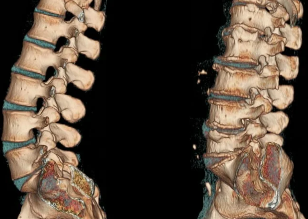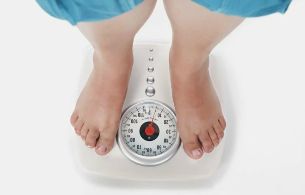Osteochondrosis is a chronic relapsing disorder, occurs on the background of the continuous deterioration of the vertebrae and intervertebral discs. Depending on the location of the vertebral structures, the victims of the lesion, the distinction between the chest, the sacralis pathology, as well as the neck. Main symptoms of degenerative disc disease — pain syndrome, the severity of which increases with physical activity, the stiffness of his movements. The clinical picture is often present spinal symptoms: headache, horse races, of the blood pressure, decrease in visual acuity and hearing.

The diagnosis is billed on the basis of the results of research tools — x-ray, MRI, scanner. In the treatment of degenerative disc disease the drugs are used in different clinico-pharmacological groups. To improve their clinical efficacy sessions of physiotherapy and massage. One of the main methods of the therapy and the prevention of the physiotherapy.
The mechanism of development of the disease
The pathogenesis of the degenerative disease of the disc is a loss of the nucleus pulposus of its hydrophilic properties. This semi-structure consists of connective tissue fibers and the jelly-like substance. Growing up, the man occurs the reduction of the vascular bed in each disk between the vertebrae. The entrance into him of nutrients takes place in a diffuse manner, it is on the principle of the miscarriage of alignment of the concentrations. This is what explains the impossibility of the full restoration cartilage tissue after injury or redundant physical load on the spine.
The process of the degenerative disease of the disk, can worsen with hormonal changes and unbalanced diet. In the cartilaginous tissue does not penetrate enough for complete operation of the amount of nutrients, which causes the violations of their structures and properties:
- loses strength and elasticity;
- the changes of form, of texture, and configuration.
The intervertebral discs flattened, and the fibrous rings are formed radial cracks. This is the cause of the reduction of the distance between the vertebrae. Progressively involved in the pathological process of connective tissue fibrous rings, and ligaments. In response to the collapse of the tissues of the immune system starts to produce immunoglobulins, which leads to aseptic inflammation and formation of edema in the joints and nearby soft tissue. The capsules of the joints are the intervertebral discs stop reliably attach the vertebrae. And when the instability of the segments increases the probability of infringement of the nerve root or the crushing of a blood vessel. This often occurs when the osteochondrosis cervical, and is the cause of his symptoms pronounced.
The causes and the triggering factors
On the state of the intervertebral disc, consequences to the decrease in the tonus of the skeletal muscles of the vertebral column. The poor management, and unbalanced functioning of the muscles occurs when the extended period of time to find the person to do not physiological position, for example, with the head down during the use of the computer. Cause the cartilage tissue may permanent port a heavy bag on one shoulder, sleeping on a soft mattress and a cushion of high.
Accelerate the destruction of intervertebral disc also external and internal negative factors:
- disorders endocrine and metabolic disorders;
- infectious diseases of the pathology, in particular chronic;
- prior to the injuries of spine (fractures, bruises);
- frequent hypothermia;
- the availability of systems or degenerated-degenerative diseases, gouty, psoriatic, rheumatoid arthritis, osteoarthritis, osteoporosis.

If the person has bad habits, it is in a risk group. Smoking and alcohol worsen the condition of blood vessels, leads to a lack of blood circulation and a deficiency of nutrients in the cartilage tissue of the disk.
If you have a flat foot or the foot greatly increases the risk of developing degenerative disc disease of any localization. Such congenital or acquired defects become the cause of the increase of the load on the spine because of the inability to ensure the due diligence of the amortization with the support. Predisposing to the onset of pathology is a factor of obesity.
During the deposition of adipose tissue on the different areas of the body is complicated by the support of the equilibrium, which leads to the effects in the excessive loads on the joints.
The clinical picture
The first clinical manifestation of the cervical, thoracic, or lumbar spine, osteoarthritis, pain in the back. During relapses it tends, radiating close to the body. The slightest movement leads to the severity of the pain syndrome. Reaction of the man is the acceptance that is forced to the position in which the intensity of the sensations that are uncomfortable is minimal:
- people with cervical osteochondrosis prefer to run in the direction of do not the head and the entire body;
- when the chest of the pathology of the person is afraid even to make a full inspiration, because he is the cause of acute pain in the thoracic region;
- patients with low back pain just to sit, stand and walk because of the damage to the spinal nerve.
Most patients complain about a doctor on the daughter's ongoing pain and the sensation of stiffness of the movements of the morning. This requires a differential diagnosis to exclude myositis (inflammatory process in the skeletal muscles of the back) and osteoarthritis. The reason for the appearance of pain, crushing pain — compensatory tension of muscle tissue for stabilization of the affected area spinal-skeletal segment. Permanent pain syndrome weak or moderate also occurs due to the stretching of an intervertebral disc and the development of inflammation aseptic.
For the disease-degenerative disk-specific localization of pseudonyms, the symptomatology. For example, the case of the lumbar pathology often occurs sciatica — attack the pain in the lumbar region and the back of the thigh. Chest pain in the lower back clinically manifest visceral pain in heart area, the right upper quadrant, the stomach, numbness, tenderness of skin, the snapping at the level of the vertebrae. But the more strong and diverse symptomatology is different from the pathology that affects the scarves the intervertebral discs.
A result of the displacement of the vertebrae, formation of osteophytes, compressed vertebral artery which nourishes the cells of the brain, allowing oxygen. The person suffers from disorders of motor coordination, tinnitus, headache, hypertension.
That may be the lack of treatment
Most of the complications of degenerative disc disease occur due to the formation of a herniated disc. It is formed during the displacement of the spinal structure of the back, which leads to the rupture of the rear of the ligament longitudinal. The disc is more unstable, and part of his bulges into the spinal canal. A considered to be a hernia, if, in the course of his training with the disk in the channel to penetrate purposee the kernel.
Is a pathological condition of the vertebral structures predisposes to compression of the spinal cord and the developing disc of the myelopathy. Clinically, it manifests itself in the numbness, the weakness of some muscle groups of the legs or hands, paresis, muscular atrophy, alteration in tendon reflexes. Can also occur from disorders of the emptying of the bladder and (or) of the intestine. Following the training intervertbral hernias are tight the arteries that feed the spinal cord. Formed had of the plots, to the death of all the nerve cells. Occurs the so-called neurological deficit — violated movement, reduced sensitivity, upset food web.

The tactics of the treatment of
The osteochondrosis does not lend itself to a complete healing, so that is not a synthesized drug, a receipt that would repair the intervertebral disks and the vertebrae. But in the regimens necessarily included chondroprotectors — symptomatic time. Preference is given to drugs with active ingredients of chondroitin sulfate and / or glucosamine sulfate (hydrochloride).
The clinical efficacy of these drugs is confirmed by the results of years of research. If the extended use of reception (from 3 months to 2 years) to fund regeneration occurs partial cartilaginous tissue, and other connective tissue structures — ligaments, tendons, of the stock exchange. As of the intervertebral disc, glucosamine and chondroitin, they begin to have the expressed analgesic, anti-edema, anti-inflammatory. This allows to reduce the dose of NSAIDS, glucocorticoids, muscle relaxants, reducing pharmacological stress on the body.
The medications to the joints are ineffective when the occasional admission officers, or their use for the treatment of degenerative disc disease 3 degree, when there is a great destruction of cartilaginous tissues.
To eliminate symptoms, which usually occur when the cervical or low back pain, the medicines are used to improve circulation, nootropics, the drug improves the microcirculation of the labyrinth, is applied when the pathology of the vestibular apparatus.
If necessary, in the treatment regimens are included antidepressants, anticonvulsants.
In the treatment of degenerative disc disease apply of physiotherapy: UHF-therapy, magnetic therapy, laser therapy. Uses reflexology, massage, exercise, girudoterapiya, swimming, yoga. When failure of conservative treatment the patient shows a surgical intervention. Practiced puncture the spray, its drive laser, reconstruction, or replacement of the implant.

















